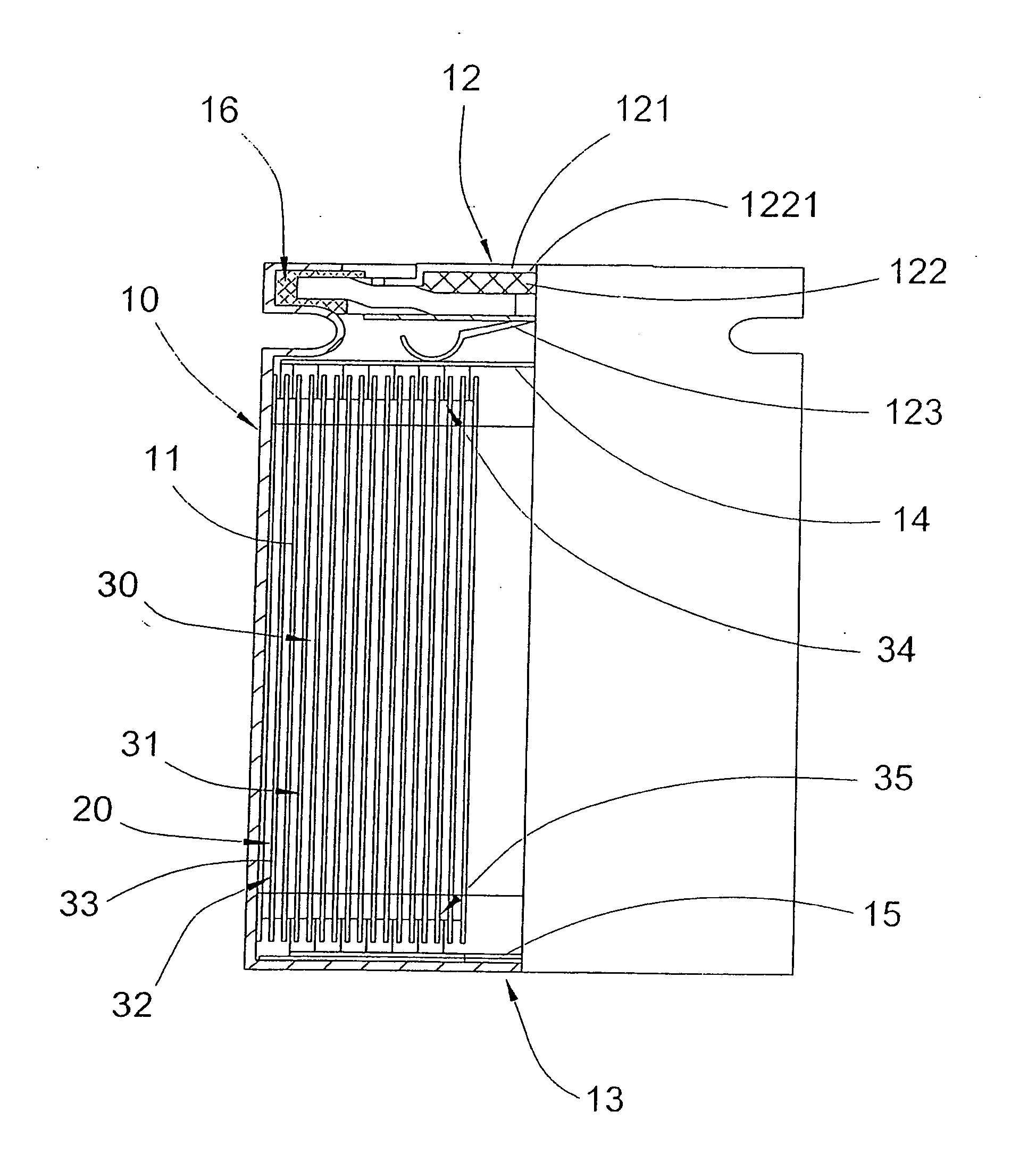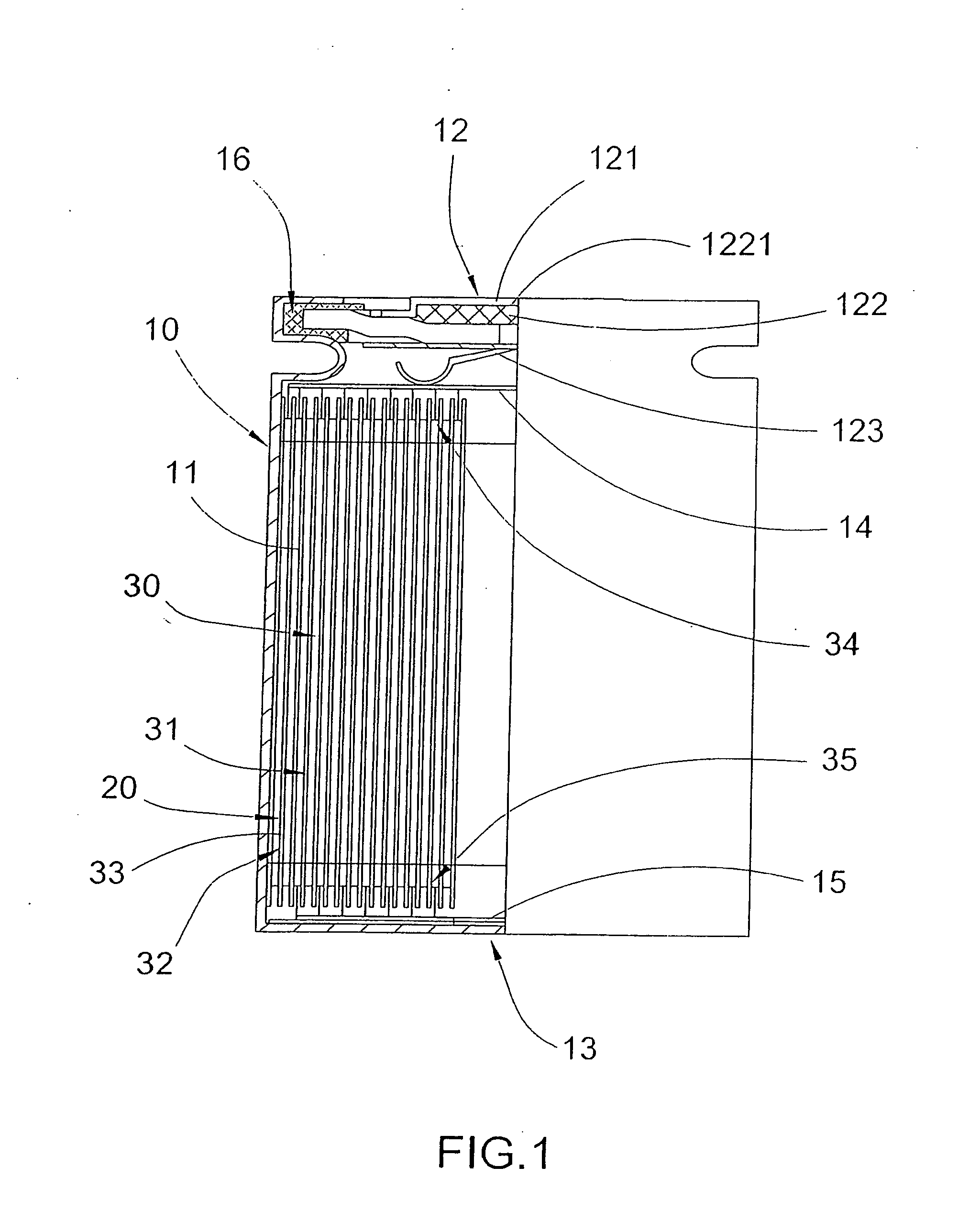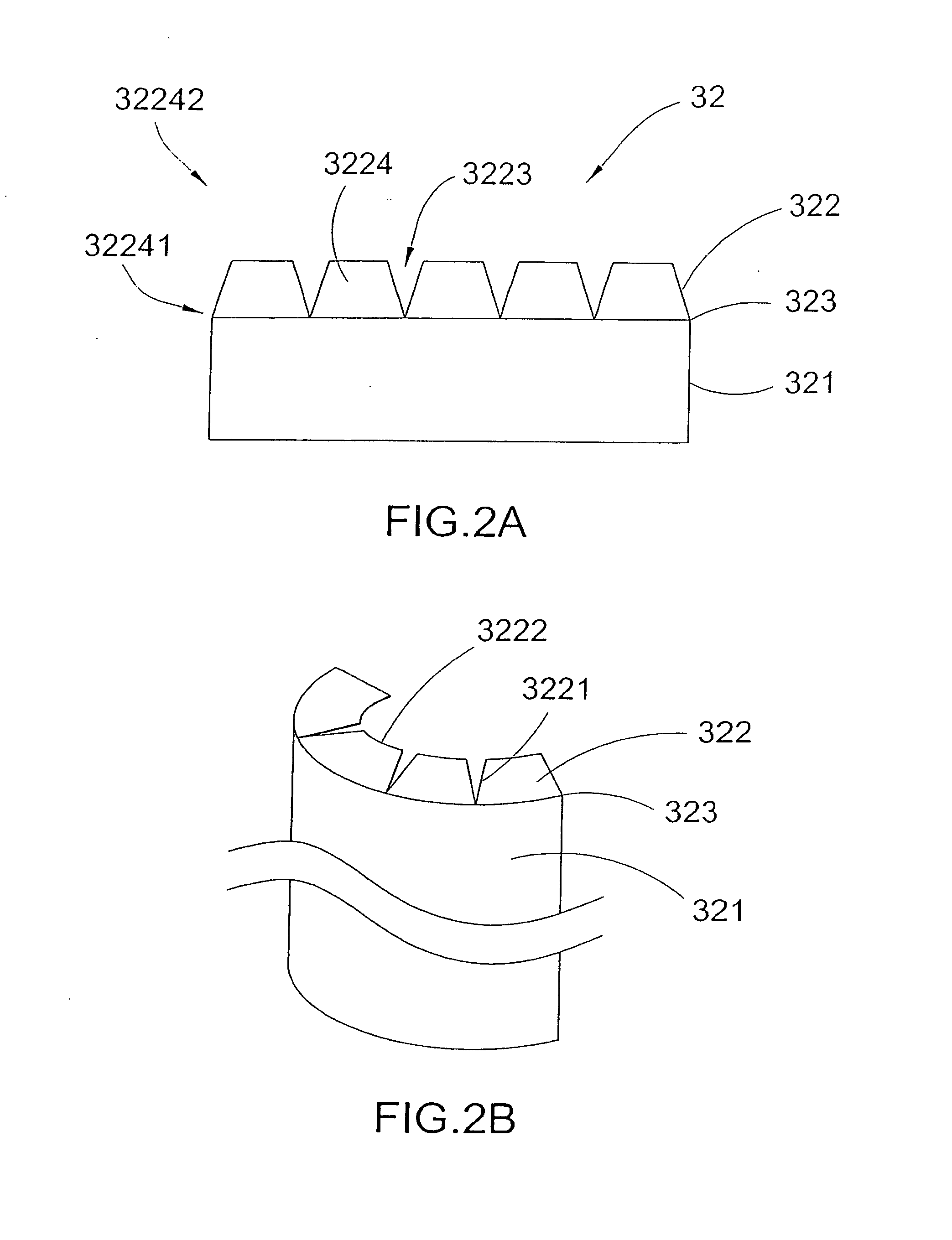Nickel-zinc battery and manufacturing method thereof
a technology of nickel-zinc batteries and manufacturing methods, which is applied in sustainable manufacturing/processing, wound/folded electrode electrodes, nickel accumulators, etc., can solve the problems of lithium batteries, which are not in line with environmental protection requirements, and cannot meet the market needs of lead acid and nickel-cadmium batteries, and achieve high and adequate power and energy, and low production cost. , the effect of high safety standard
- Summary
- Abstract
- Description
- Claims
- Application Information
AI Technical Summary
Benefits of technology
Problems solved by technology
Method used
Image
Examples
Embodiment Construction
[0042]Referring to FIG. 1 of the drawings, a nickel-zinc battery according to a preferred embodiment of the present invention comprises a casing 10, an electrode assembly 30 and an electrolyte 20.
[0043]The casing 10 is a battery shell having a shell cavity 11 and comprising a cap unit 12 at an upper end, a bottom unit 13 opposite to the cap unit 12, an anode current collector 14 connecting between the cap 12 and the electrode assembly 30, a cathode current collector 15 connecting between the bottom unit 13 and the electrode assembly 30, and a sealing ring 16 connected to the cap 12.
[0044]The electrode assembly 30 and the electrolyte 20 is received and sealed inside the casing 10. Preferably, the casing 10 is a cylindrical body, the cap unit 12 is protruded from an upper end of the casing 10 and the bottom unit 13 is protruded from a bottom end of the casing 10. The electrode assembly 30 comprises a nickel cathode 31, a zinc anode 32, and a membrane 33 separating the nickel cathode 3...
PUM
| Property | Measurement | Unit |
|---|---|---|
| pore size | aaaaa | aaaaa |
| pore size | aaaaa | aaaaa |
| thickness | aaaaa | aaaaa |
Abstract
Description
Claims
Application Information
 Login to View More
Login to View More - R&D
- Intellectual Property
- Life Sciences
- Materials
- Tech Scout
- Unparalleled Data Quality
- Higher Quality Content
- 60% Fewer Hallucinations
Browse by: Latest US Patents, China's latest patents, Technical Efficacy Thesaurus, Application Domain, Technology Topic, Popular Technical Reports.
© 2025 PatSnap. All rights reserved.Legal|Privacy policy|Modern Slavery Act Transparency Statement|Sitemap|About US| Contact US: help@patsnap.com



